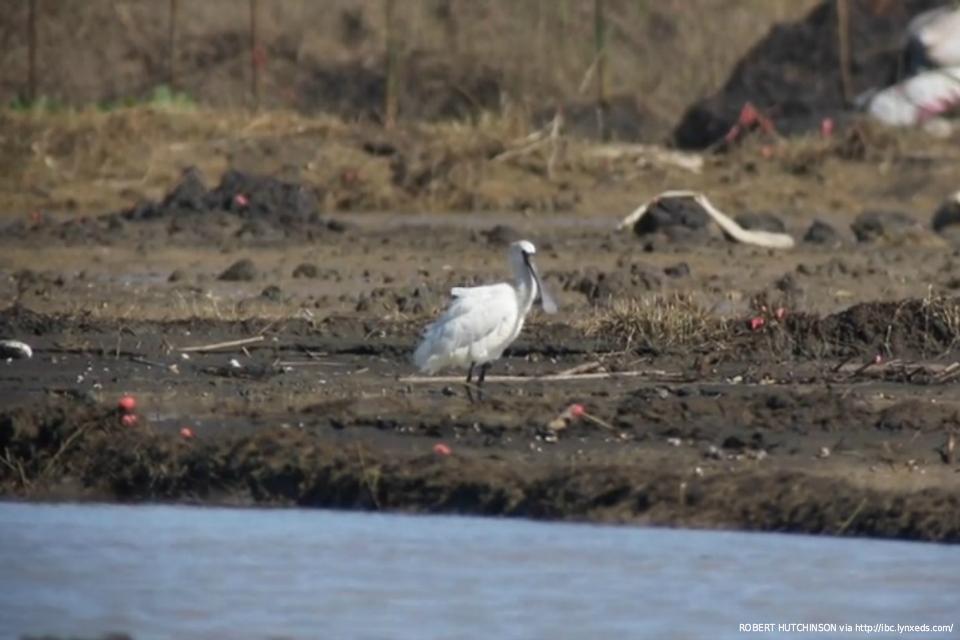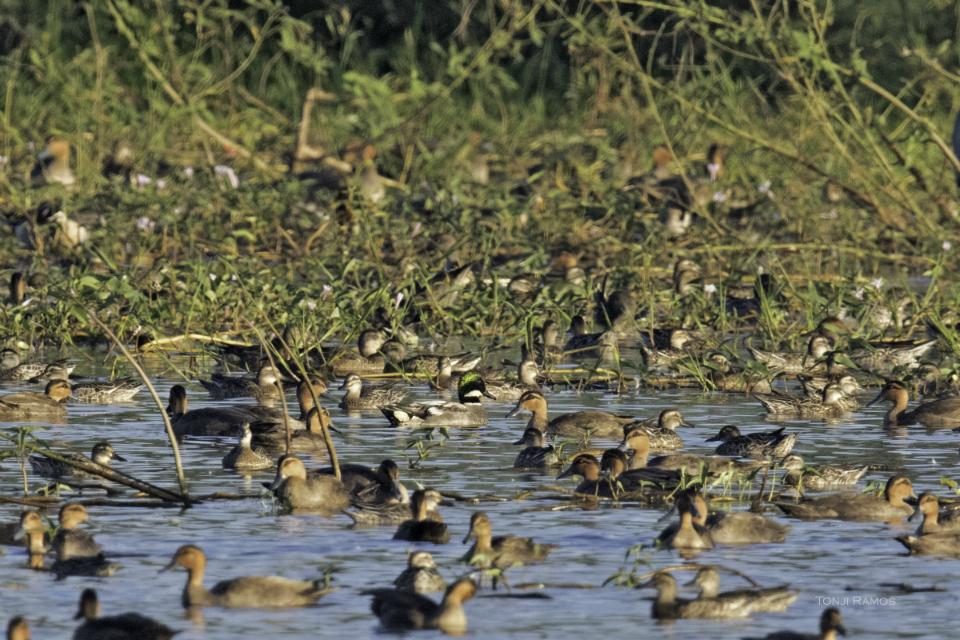Various rare birds spotted in Candaba
On the early morning of January 9 in Bahay Pare, Candaba, Pampanga, Robert Hutchinson, an experienced birder and a co-author of "A Naturalist's Guide to the Birds of the Philippines," was peering through his spotting scope at the thousands of waterfowl paddling and feeding in a plant-overgrown pond when he caught sight of something special.
The bold facial pattern of creamy yellow and bottle-green swirls and black and white curves gave Hutchinson no doubt as to the identity of the creature he was looking at amid the thick mats of aquatic plants that morning: A male Baikal Teal (Anas formosa) still sporting its breeding colors.

A teal is a small freshwater duck, but this isn't just any other teal. It is the first Baikal Teal found wintering in the Philippines.
"I've seen Baikal Teal before in China and Japan but finding the first for the Philippines is a massive thrill, especially as it's one of the best-looking ducks," said Hutchinson.
This teal (it is named after Baikal Lake and the epithet formosa comes from the Latin for "beautiful") breeds in Eastern Siberia and flies south in the winter, mostly to South Korea and East China and Japan. Wintering individuals have also turned up in Hong Kong and Taiwan.
Amazingly, Hutchinson and Dy also found and photographed another rare bird in Candaba just a week prior to the Baikal Teal discovery: a subadult Black-faced Spoonbill (Platalea minor), feeding with a flock of egrets in a wet field.

The Black-faced Spoonbill, a wading bird with a distinctive spatulate bill, is listed by the IUCN as "Endangered" with an estimated global population of just 2,700 individuals.
It breeds in North Korea, South Korea, China and Russia, and spends the winter mainly in China, Taiwan, Hong Kong, South Korea, Japan and Vietnam. It is a rare visitor to the Philippines with one seen in each of the past two years in Candaba.
Another surprise from Candaba's wetlands
On January 7, Kevin Carlo Artiaga, a University of the Philippines student who is researching the abundance and habitat use of the Philippine Duck (Anas luzonica) and other wetland birds in Pampanga, posted online a photo of an unusual duck he had seen in a pond in Candaba.
Three days later, Hutchinson went to the pond where Artiaga had seen the mystery duck, found it and positively identified it as a male Falcated Duck (Anas falcata), which is classified by the IUCN "Near Threatened."

Incidentally, it was in the same pond where the Baikal Teal was.
Like the Baikal Teal, this is also the first Philippine record of a Falcated Duck.
The Falcated has glossy green and black feathers on the sides of the head, contrasting with a white cheek bar. It also has clearly defined black and white collars.
The name "falcated" comes from the sickle-shaped long tertial feathers of males in breeding condition.
"Falcated Ducks breed in a similar area to Baikal Teal but stretches a bit further south into Mongolia, North China and northern Japan. They winter in a wide band across from Japan through East China, northern Vietnam, Myanmar to northeastern India," Hutchinson noted.
So, in a span of just nine days, the ponds and fields of Candaba yielded a rare spoonbill and two first country records of a teal and a duck.
Candaba: a globally significant wetland
The Candaba marshes, which are in the towns of Candaba, San Miguel and San Ildefonso in Pampanga and Bulacan are an important wintering and staging area for migrant waterfowl.
They serve as a stop-over site where wintering wildfowl land to rest and replenish their fat reserves in preparation for the next long-haul migration flight.
"The fact that rare species like Baikal Teal and Falcated Duck arrive in Candaba, and likewise the Critically Endangered Baer's Pochard (Aythya baeri) which arrived there last year, and the Endangered Black-faced Spoonbill that visited for the last two last year, shows how important it is for migrant wildfowl," Hutchinson said.
It is not just migrant wildfowl that benefit from Candaba's wetlands. Resident species, especially the Vulnerable Philippine Duck and Philippine Swamphen (Porphyrio pulverulentus) also need healthy wetlands to thrive and reproduce.
To highlight Candaba's value to avian life: BirdLife International estimates the global population of Philippine Duck at 5,000 to 10,000. Currently, there are about 1,500 present in Candaba this season. Take away Candaba as a viable habitat and Philippine Duck would be much closer to extinction than it already is.
According to the book "Key Conservation Sites in the Philippines" by Neil Aldrin Mallari, Blas Tabaranza Jr. and Michael Crosby, "about 100,000 ducks were observed in a single day in Candaba" in 1982.
"No other site in the Philippines has been known to support such large concentrations of Anatidae, but the number of wintering wildfowl has recently declined dramatically," write Mallari, Tabaranza and Crosby.
The main threats to this globally significant wetland are the conversion of marshland to agricultural and industrial purposes, and to changes in agricultural practices over the years. It used to be that rice was planted only when the rainy season ends in November or December, but now rice is grown practically all-year round.
"At this time, the tiny remaining area of Candaba wetlands is a feeding area to 2,000 migrant ducks—as well as 1,500 Philippine Ducks—and without these feeding areas they might not acquire the fat reserves their bodies need to make the long return flights to their breeding grounds," warned Hutchinson.
New initiative to save Candaba's remaining marshlands
In an effort to save what remains of Candaba's marshland habitat, birder and photographer Ivan Sarenas and fellow conservationists formed the Philippine Wilderness Land Trust.
The group's intention is to acquire land that is proven to be key habitats of endangered species and which receive no or inadequate legal protection. Their aim is to maintain those lands as wilderness.
Wetlands such as those in Candaba "are among the most threatened ecosystems of the Philippines and the rates of habitat loss are comparable to those of the country's forest loss," according to a paper by Arne Jensen, who chairs the WBCP Records Committee and sits on the board of PWLT.
Healthy wetlands are important because they mitigate flooding, filter out water-borne pollutants, recharge groundwater supplies, protect shorelines, provide habitat for wildlife, and serve as locations for recreational and scientific activities, wrote Jensen.
"Wetlands of the Philippines—including Candaba—is already much diminished and that makes the remaining areas of critical importance," said Hutchinson. — TJD, GMA News



